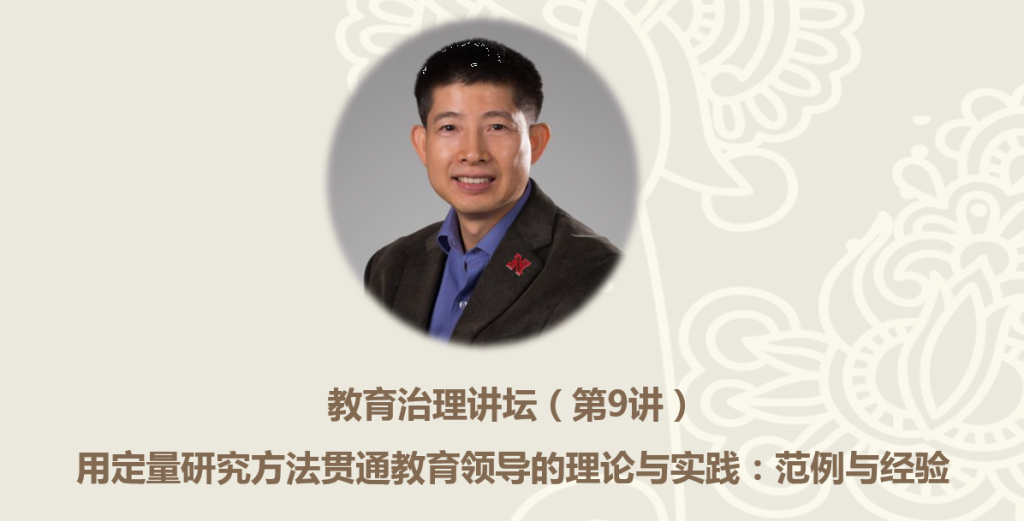
报告人:Jiangang Xia, Ph.D. University of Nebraska-Lincoln
主持人:李伟胜,华东师大教育管理学系系主任
时间:2017年6月6日下午13:00-15:00
地点:公共管理学院519报告厅
主办:华东师大教育学部教育管理学系(教育经济研究所)
报告题目:
Using Quantitative Research Methods to Link Educational Leadership Theory and School Practice: Example and Experience
(注:现场用中文作报告)
敬请各位老师和同学参加!
嘉宾介绍Jiangang Xia
Dr. Jiangang Xia is an assistant professor of educational administration in the Department of Educational Administration at the University of Nebraska-Lincoln (UNL). He received his B.S. of mathematics and M.A. of education both from East China Normal University, and earned his Ph.D. of Educational Leadership from Western Michigan University. Before he joined UNL, he worked seven years as a high school math teacher in China, and one year as an evaluation specialist at a large urban school district in US. His research and teaching interests include educational organization/leadership theory, policy analysis, program evaluation, quantitative research methods, and large-scale data analysis. He has published eight journal articles and four book chapters, and presented over 20 research papers in national/international conferences in the area of P-12 educational leadership.
内容介绍Abstract
This lecture introduces quantitative educational research approach. Based on personal experience and real examples, Dr. Jiangang Xia introcues his research philosophy that links educational leadership theory to school practice (empirical data) using appropriate quantitative methods. The focused research topic is principal-teacher’s decision-making power relationship–whether it is a win-win situation or a zero-sum game; the data source is the US national Schools and Staffing Survey (SASS); and the methods include the traditional multilevel modeling (MLM) and the emerging multilevel structural equation modeling (MSEM).
Note:
The lecture PowerPoint is written in English while the presentation language is Chinese. Audience does not need statistical background to understand the lecture.







